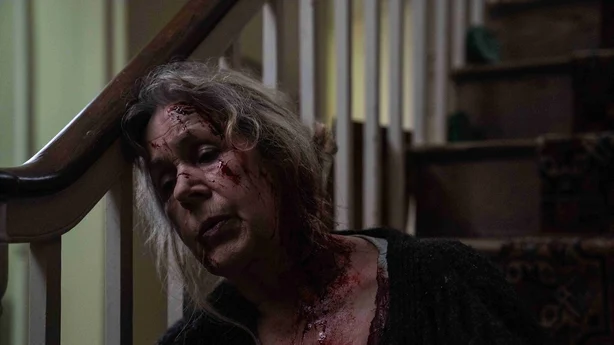You wait for ages for an Irish language horror to arrive and then two show up at the same time - An Taibhse, by John Farrelly and Fréamhacha by Aislinn Clarke, are currently doing the rounds at various festivals and the language isn't scaring anyone away.
Horror is massive. That's the take away for this writer from talking to John Farrelly and Aislinn Clarke about their respective scannán uafáis - horror films. Both are huge fans of horror. So why not one in Irish? Ceart go leor, say's you.
Farrelly's An Taibhse is more closely related to what you might expect in major horror films - big old house, possibly haunted, a kid who has to go through some kind of terror-filled ordeal. Set in 1852 when the Great Famine is just over, a father and his daughter take work looking after an Teach Mór for the winter. Fine. But, of course, there's fog, a big old house in a rural location and a father who, let's say, starts acting a bit odd. Farrelly chose to film it as Gaeilge in order to give it an authentic historical accuracy. So it's a spooky horror, uafás scáfar. Be scared.

Aislinn Clarke's Fréamhacha - meaning roots - takes a different approach. She uses her film to examine two women characters - one ostensibly rural, Irish speaking and conservative, the other young, urban, liberal - and how they deal with individual trauma they have experienced. Peig, the elder, supposedly conservative woman, is to be cared for by Shoo, the city liberal. Peig is convinced she was abducted by the fairy people at some point, a situation which ultimately leads Shoo to face her own issues.
While Clarke maintains that some people dismiss horror as schlock unworthy of their time, she points out, rather reasonably, that horror is simply drama with scary bits. Tell a good story that gives you the heeby-jeebies from time to time - us humans love that stuff, deep down.

It makes sense that the Irish language gets a look in on the horror scene, what with Ireland having a strong tradition of ghosts - I don't believe in them but they do exist - Banshees (an bhean sídhe), Púcas, cailleachaí, na daoine maithe (fairies), the festival of Samhain and all manner of stories in which they feature heavily - just ask The Unfortunate Fursey - and which travelled all the way through centuries of the Irish language - an oral culture - to the present.
Hopefully the two film-makers above inspire new and up-coming film makers to consider the riches of Dracula, the Hellfire Club shenanigans, Crom Dubh or Leap Castle and the Irish ability to appreciate a good story to cook up their own witches brew.
Disclaimer: The copyright of this article belongs to the original author. Reposting this article is solely for the purpose of information dissemination and does not constitute any investment advice. If there is any infringement, please contact us immediately. We will make corrections or deletions as necessary. Thank you.






